Nature photography is all about capturing beautiful landscapes, wildlife, and flowers. It is a fantastic way to feel deeply connected to nature, discover new places, and see the world uniquely. The chilly weather, constantly changing lights, and noncooperative wildlife make this photograph different.
But, to capture all this beauty, you will need the right camera and gear. Plus, keeping your device charged is essential. Jackery Solar Generators and Jackery Explorer Portable Power Stations ensure your camera, laptop, and drone are always charged up for the perfect shot.
What Is Nature Photography?
Nature photography involves taking pictures of the world’s beauty and diversity. This outdoor photography showcases natural elements like wildlife, landscapes, plants, and close-ups of natural scenes and textures. It is an umbrella term covering landscape, wildlife, and garden photography.
This type of photography aims to show the intricate details, amazing views, and unseen moments in nature. The goal of nature landscape photography is not about taking pretty pictures but also about telling stories and making people care about nature.
Nature Photography Equipment & Gear
If you want to capture the essence of the natural world effectively, you must have specialized photography equipment. These include:
Camera : Capturing the scale and specific details is core to nature photography. That is why it is essential to have a DSLR camera with a crop sensor. With this camera, you can zoom in to a particular location, thereby focusing on your subject and recording its details effectively. If you are a beginner, you can opt for a full-frame camera with a 35 mm sensor.
Overall, make sure your camera withstands difficult weather conditions. It should have rich-in camera features, a large sensor, and a wide selection of filters or lenses.
Lens : A wide-angle lens is a good option for taking pictures of vast landscapes. It helps you capture the large and even tiny details in a single shot. Further, If you want to zoom in on animals from far away, a zoom lens with a wide opening is also perfect. It makes long distant subjects look closer and even stand out against blurry backgrounds. As a result, your nature landscape photography looks sharp and clear.
Tripod : Tripods are essential tools for nature photographers. They keep your camera steady, especially while waiting for a perfect moment to capture wildlife in action. Whether you're taking a long exposure of a waterfall, tracking how weather changes a scene, or capturing growth or decay, you can get these awesome shots with tripods effectively.
Jackery Solar Generators : Nature photography is done outdoors in remote locations where you do not have access to electrical outlets. Therefore, you must carry your power source to charge your photography appliances like drones, laptops, cameras, and many more.
Jackery Solar Generators are power-charging solutions for nature photographers. These lightweight solar generators can supply consistent electricity to photography devices like laptops, cameras, drones, lights, and many more. They are compact generators that you can carry anywhere with you during outdoor activities.
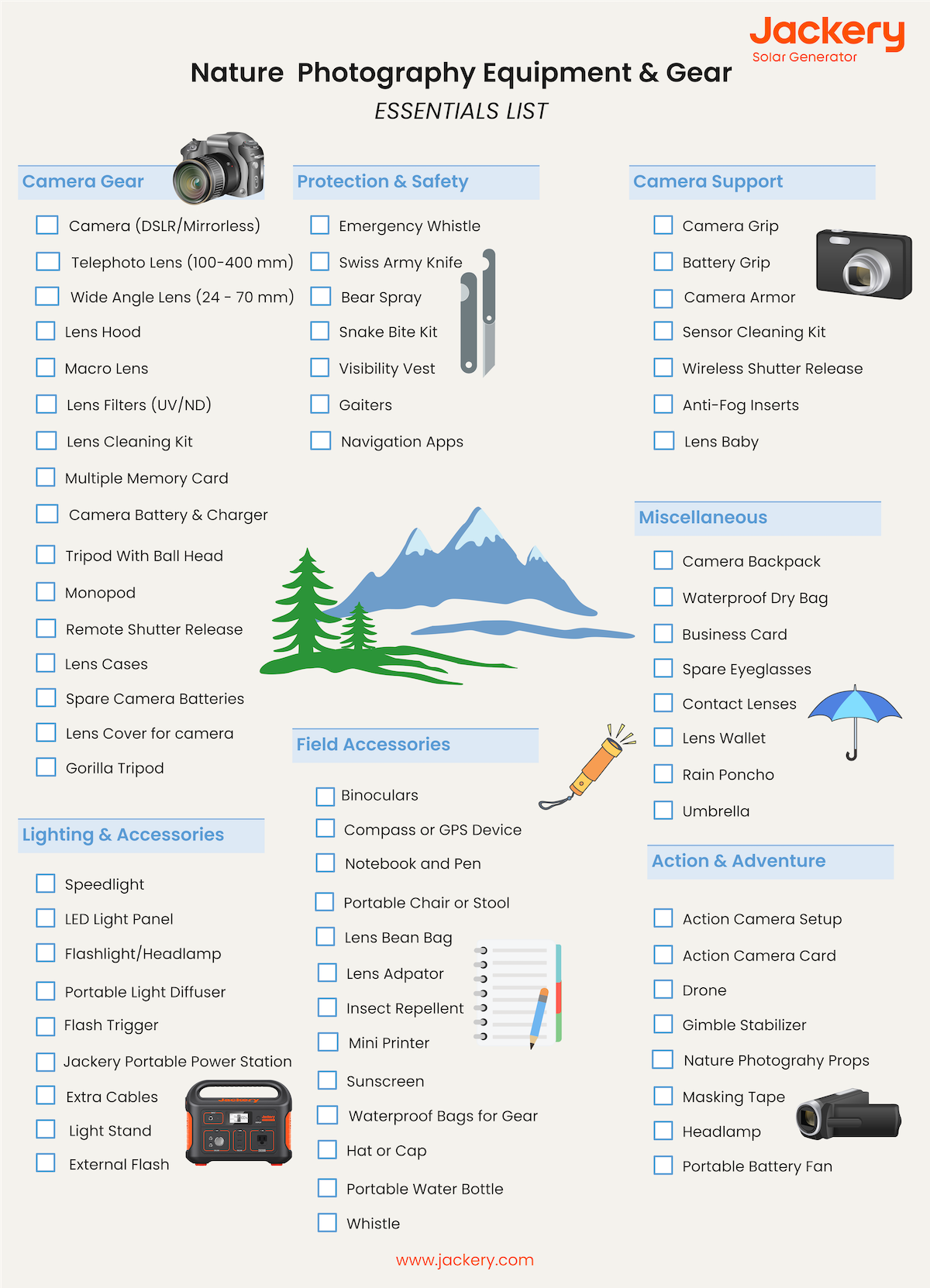
What Are The Types of Nature Photography?
From majestic landscapes to fascinating wildlife, the different types of nature photography can captivate and evoke a sense of emotion in several ways. Let’s learn about this photography in detail.
Landscape Photography
Landscape photography is one of the types of nature photography that captures natural worlds and man-made structures. It includes rivers, mountains, deserts, forests, and city skylines. This type of photography focuses on showing the entire scene, highlighting the terrain’s changes and beautiful panoramas instead of zooming into particular details.
For nature landscape photography, you must:
- Invest in a good DSLR camera with a wide-angle lens.
- Ensure you shoot during the golden hour, which is early morning or late evening. It provides the most uncomplicated conditions for beginners to capture stunning landscape images.
- Take pictures in a raw format. This way, you can retain more details and are flexible enough to adjust the exposure during post-processing.
- Look for a focal point, like a mountain peak or a tree. Work on it to create a visually appealing composition.
Wildlife Photography
Wildlife photography is about capturing pictures of animals, especially those considered exotic in their natural habitats. In this type of photography, you can capture animals in action, like eating, fighting, or flying. You must have patience and understand animals’ behavior and habitats to capture a stunning wildlife picture.
For capturing wildlife photos, you should:
- Opt for a quality telephoto lens with image stabilization. It will help you capture wildlife located far away without a camera shake.
- Shoot raw format to capture more information and have greater post-processing flexibility.
- Patience is the key to wildlife photography. Patiently waiting for the right moment can help you get the perfect shot of an animal in action.
- Move slowly to avoid disturbing the animals.
- Use the camera’s eye-tracking feature to capture the eyes in sharp focus.
- Capture fast-moving animals, use a fast shutter speed (1/500th of a second or faster).
- Shoot in burst mode to take a series of wildlife actions.
Plant and Flower Photography
Plant and flower photography is about capturing the beauty of flowers, plants, trees, and other flora in detail. This type of photography can be performed in various settings, from local gardens and parks to forests and fields. With plant and flower photography, you can show the intricate details of the plants in a visually appealing way.
For this type of nature photography, you must:
- Find good angles and perspectives to capture the image of flowers.
- Opt for a clear and simple background so that you can put more emphasis on the flowers.
- Concentrate on the details of the flowers, like the texture and patterns of the petals.
- Get close and capture the flower’s macro details.
- Use natural lighting to focus on the natural color and texture of the flower.
- Experiment with camera settings, like aperture and shutter speed, to create a beautiful bokeh effect.
Water Photography
In water photography, you can capture natural landscapes, like peaceful lakes, sandy shorelines, and gushing waterfalls. Whether it is a waterfall crashing over rocks or the peacefulness of a quiet stream in the forest, you can capture some truly amazing images.
To capture the earth’s most mesmerizing element, water, make sure you:
- Have a tripod to keep your camera steady.
- Shoot from a low angle to capture reflections and a higher angle to show the flowing water.
- Plan your water photography according to the weather.
- Experiment with distinct shutter speeds to capture motion and create different moods.
- Use a slow shutter speed for smooth and dreamy water and a faster shutter speed to focus on action and details.
- Reduce glare and increase saturation by using a polarizing filter.
- Enhance your photo using editing tools like saturation, color temperature, and contrast, but do not overdo it.
Macro Photography
Macro photography captures close-up and highly detailed images of tiny subjects like small flowers, insects, and other natural objects. This type of photography is usually done using equipment made for an extremely detailed-oriented approach.
For macro photography, follow the tips given below:
- Increase the depth of the field and bring your subject more into focus by using a narrow aperture (preferably a high f-stop number).
- Shoot at the subject’s level for a unique perspective. Use a high shutter speed to freeze the subject’s motion and a low ISO to avoid unnecessary image noise.
- Use different lenses and focal lengths to create different effects and perspectives. A macro lens can be used to get a close-up of any subject.
Cloudscape Photography
Cloudscape photography is all about capturing clouds or sky. Clouds and their volatile nature make the photos more dramatic and intense. This photography focuses on clouds’ shapes, textures, and colors that may go unnoticed when they are not the subject.
For cloud photography, you should:
- Schedule your shoot according to the weather forecast. Sunrise and sunset are the best times to do cloudscape photography.
- Consider interesting shapes, patterns, contrast, and textures in the clouds.
- Use lens filters, like the ND filters, and reduce the intensity of the light and balance the exposure. You can also use polarizing filters to enhance clouds’ color saturation and intensity.
Nature Photography Tips & Ideas
Nature photography is not always easy. It is usually difficult to find the right subject in the right conditions and nail the shot. Here are some of the tips and ideas you can incorporate while doing this photography:
Make Plans Beforehand : Before setting foot outdoors for nature photography, you must plan everything. Check the weather and make clear gear decisions depending on the forecast. You should also research the subject matter you might encounter during your excursion. It includes the list of wildlife in the area and the peculiarities of different wildlife subjects.
Select The Best Time of Day : Shooting in the “Golden Hour,” early morning or late evening, is perfect for nature photography. In cooler, darker conditions, animals are more active, and landmarks are less crowded. Plus, the soft, indirect light creates dreamy landscapes with fewer harsh shadows.
Decide The Type of Subject : Nature photography is usually divided into two types, mainly large-scale subjects and small-scale subjects. Large-scale subjects cover landscapes like mountain ranges, deserts, and river bodies. On the other hand, small-scale subjects include rocks, leaves, petals, branches, or tidal pools.
Be Patient : In wildlife photography, you must ensure you do not disturb the animals in their habitat. So, it is essential to patiently wait for a few extra minutes to get your shot. Make sure to do extra research and understand the behavior of the animals before going out.
Nature Photography Techniques
If you want to get the best natural image, you must learn the following techniques:
Shoot in RAW: Although RAW images need more storage and processing time, they are highly beneficial. It allows you to adjust the white balance precisely. You can also recover lost detail in the highlights and the shadows and add detailed tonal and color shifts without worrying about unpleasant objects.
Maintain Your ISO Accordingly: Mostly, nature photographers shoot at low ISO (100-400) to capture a detailed image. However, it is not valid in every instance. For example, you take a photo of a sunrise in a mountain meadow with a slight breeze, which blows the grasses and makes the image’s foreground blurry. However, you want the entire image to be sharp. In that case, you must use high ISO (800 or above) to freeze the motion.
Understand The Histograms: What you see through the viewfinder can be different from what the camera is seeing. A histogram will help you with it. If the curve leans left, your photo might look too dark. But if it leans right, it could be too bright. When you aim for the histogram that is mostly in the middle, with not much at the edges, you will get a well-balanced shot.
Use The Rule of Thirds: The Rule of Thirds is a golden rule in photography. Suppose the image is cut equally into 9 parts and divided by two horizontal and vertical lines. Every interesting line in the image is where the eye falls. When you place your subject in these intersecting lines or any one of the squares, you can shoot a more dynamic photo.
Understand the Exposure Triangle: The exposure triangle includes the shutter speed, aperture, and ISO. They work together to form a perfect exposure. This way, you can keep the bright and dark parts of your photo look clear. You can also bring out details from the shadows afterward. However, once the bright parts are washed out, it becomes difficult to get the details back.
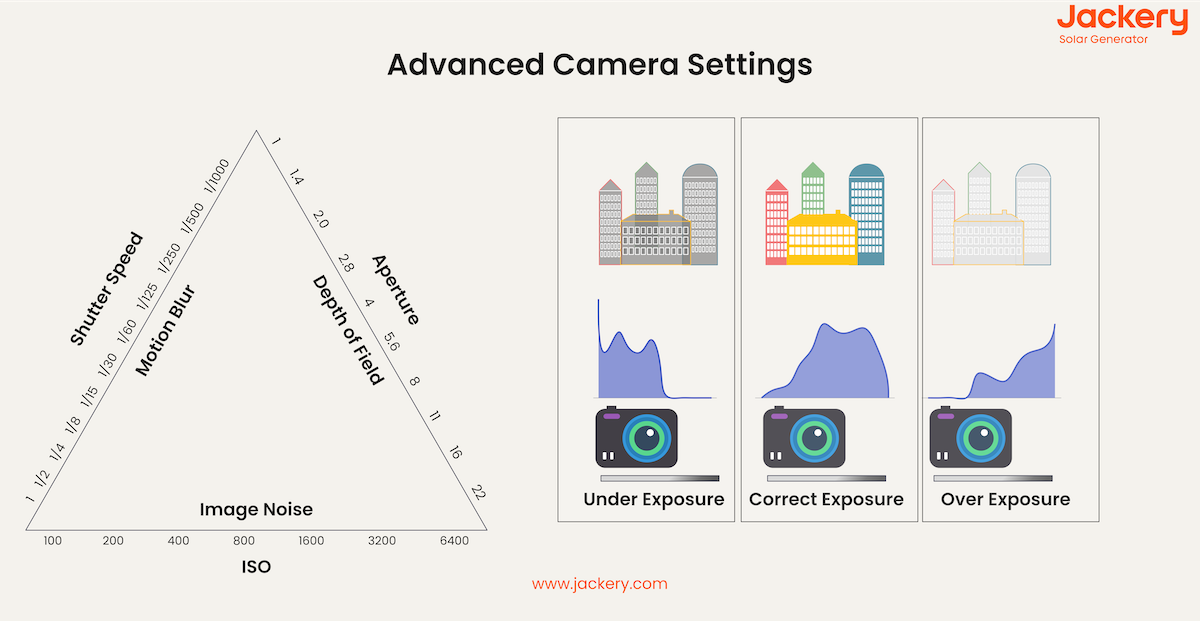
How Jackery Solar Generators Help for Nature Photography?
Jackery provides Jackery Solar Generators, Jackery Explorer Portable Power Station, and Jackery SolarSaga Solar Panels for indoor and outdoor activities. Jackery Solar Generators are compact and easy to set up. They can charge your photography devices, like cameras, drones, laptops, and more efficiently. Unlike loud gas generators, Jackery Solar Generators are quiet. Therefore, you can click pictures of wildlife without scaring them. Plus, their foldable solar panels are handy to carry around wherever you go.
Jackery Solar Generator 500
Jackery Solar Generator 500 is a solar solution that includes the Jackery Explorer 500 Portable Power Station and Jackery SolarSaga 100W Solar Panel. It provides a clean power source to campers and nature photographers. It also offers stable power to mainstream electronics and small appliances like laptops, lamps, phones, drones, small fridges, etc. The Jackery Explorer 500 Portable Power Station is the size of a basketball and has a solid handle, which makes it easy to carry.
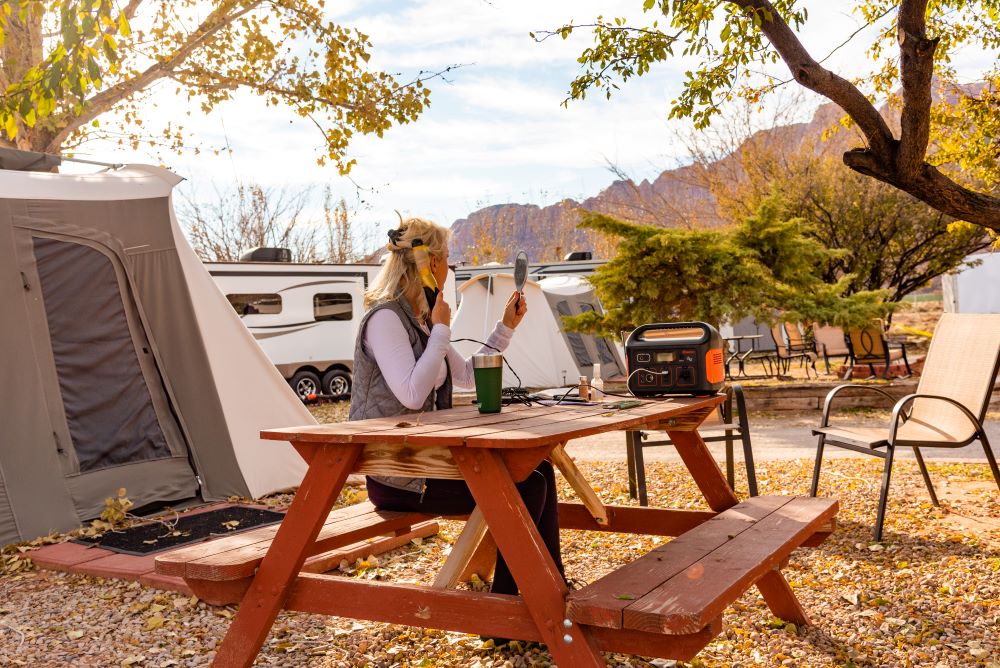
Customer Review:
“I purchased the Jackery Solar battery and received a solar panel as well. The unit will be perfect for outdoor activities.” — Gayle C.
Jackery Solar Generator 300 Plus
Weighing only 11 lbs, the Jackery Solar Generator 300 Plus has a 288 Wh battery capacity and 300 W output. It also has iPad-sized Jackery SolarSaga 40W Solar Panels that can easily fit in your backpack. Furthermore, it supports fast charging for multiple devices and offers various charging options.

Customer Review:
“Easy to use! Very good form, fit, and function! Overall, a great solar generator!” –- James Grgurich.
|
|
Solar Generator 500 |
Solar Generator 300 Plus |
|
Capacity |
518 Wh |
288 Wh |
|
Battery Cell |
Lithium-ion |
LiFePO4 |
|
Cycle Life |
500 cycles to 80%+ capacity |
3000 cycles to 80%+ capacity |
|
Recharging Methods |
Solar Recharging : 9.5 H (Jackery SolarSaga 100W Solar Panels) Wall Recharging : 7.5 H Car Recharging : 7.5 H |
Solar Recharging : 9.5 H (Jackery SolarSaga 40W Solar Panels) Wall Recharging : 2 H Car Recharging : 5.5 H USB Recharging : 2.8 H |
|
Output Ports |
Ac Output (x1) : 110 V, 60 Hz, 500 W (1000 W Peak) DC Output (x2) : 12 V⎓7 A USB - A Output (x3) : 5 V⎓2.4 A |
AC Output (x1) : 120 V, 60 Hz, 300W (600 W Peak) USB - A Output (x1) : 15 W Max 5 V⎓3 A USB - C Output (x1) : 15 W Max 5 V⎓3 A USB - C Output (x2) : 100 W Max, 5 V⎓3 A (5 V, 9 V, 12 V, 15 V, 20 V up to 5 A) |
|
Working Hours |
DSLR Camera (12 W) : 37 H Phone (5 W) : 88 H Drone (100 W) : 4 H Laptop (50 W) : 9 H Light (5 W) : 88 H |
DSLR Camera (12 W) : 20 H Phone (5 W) : 49 H Drone (100 W) : 2 H Laptop (50 W) : 5 H Light (5 W) : 49 H |
Nature Photography FAQs
What size of power station do I need for photography?
If you want to determine the size of the power station you need for photography, you should consider how many devices you will power, how much power they consume, and how long you want to use time.
Let’s understand it by calculating the working hours of the Jackery Explorer 500 Portable Power Station when charging a camera (12 W), laptop (50 W), and phone (5 W) at the same time.
Working Hours = Battery Capacity in Wh * 0.85 / Wattage Consumption of Equipment
= 518 Wh * 0.85 / 67 W = 6.6 H
Here, we have multiplied the battery capacity of the Jackery Explorer 500 Portable Power Station by 0.85 since there will be some power loss when charging the equipment.
What do you do in nature photography?
In nature photography, you can capture natural elements like sky, water, land, and flora and fauna. It covers intricate details, amazing views, and unseen moments found in nature.
Is nature photography easy?
Nature photography involves a lot of time and effort. It takes time to perfect your photography skills. You have to be patient to capture the perfect shot of nature.
What is forest photography called?
Forest photography is a part of landscape photography. But, it is completely different. It involves capturing pictures of wooded areas. Although forest photography seems simple, it is unique and challenging to master as forests are considered visually messy.
Do you need a degree to be a nature photographer?
Having a formal education in nature photography is helpful but not mandatory. You can perfect your skills by studying other photographers’ work and implementing it while capturing natural shots.
Final Thoughts
Nature photography is not simple, but it provides vast artistic, personal, and spiritual rewards. You need different skill sets and appropriate equipment to capture the moments appropriately. Jackery Solar Generators are power-charging solutions that you can use to power most of your photography-related appliances. They are lightweight, which means you can carry them easily and shoot nature images whenever and wherever you want.
Learning Resources
- Hunting with the Camera: Nature Photography, Manliness, and Modern Memory, 1890–1930 - ResearchGate
- Asia’s Greatest Wildlife Sanctuaries by Bjorn Olesen and Fanny Lai
- Shark: Portraits by Mike Coots
- Safari of My Life- Wildlife Photography Film by Klaus Tiedge



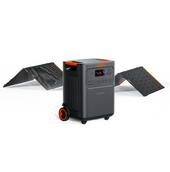


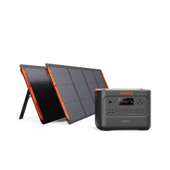

























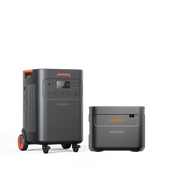







![[Add - on] Jackery Manual Transfer Switch for Explorer 5000 Plus - Jackery](http://www.jackery.com/cdn/shop/files/add-on-jackery-manual-transfer-switch-for-explorer-5000-plus-9017324.png?v=1754016782&width=170)






























































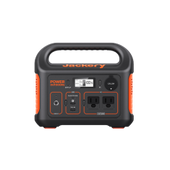


























Leave a comment